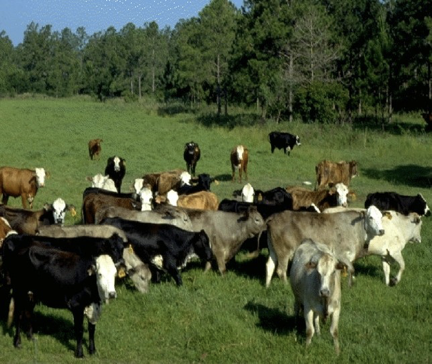
Numerous management factors can have an impact on the economics of beef production, as well as on other livestock enterprises. Every farm is different, so the relevance of a given issue to a particular farm varies. However, a management approach that typically is of great economic value often interacts with pursuit of other recommended objectives, with the result being an even greater overall positive impact on an operation. Such a result is commonly referred to as “synergy.”
In other words, while implementation of improved approaches in one specific aspect of forage-livestock management is normally quite beneficial, in many cases the simultaneous employment of additional good management practices focused on some other aspect of the operation can be even more beneficial than would be expected.
This idea is expressed by a phrase attributed to the famous Greek philosopher Aristotle, “the whole is greater than the sum of its parts.” While this concept does not apply universally in this world, a strong argument can be made that it does have significant application with regard to at least four major forage/livestock production strategies that need to receive major focus on the majority of forage-livestock operations.
Soil Testing And Soil Amendments- Because soil testing eliminates guessing on fertilizer and lime applications, use of this practice facilitates growing forage legumes. Also, proper fertilization increases forage yields for two reasons. Properly fertilized forage crops (grasses or legumes) make more forage growth, plus it results in forage crops being more competitive against weeds. Weeds take space, soil moisture, and nutrients that could otherwise benefit forage crops. Most weeds have lower forage quality than forage crops, but even weeds that have some forage value produce low yields.
Forage Legumes- The forage quality of legumes is usually higher than that produced by grasses, resulting in better animal performance. Also, legumes can often offset certain negative effects of certain anti-quality factors. For example, the single best technique for reducing the impact of tall fescue endophyte toxins is to grow a forage legume such as a clover with the toxic fescue. Growing legumes with grasses also lowers nitrogen fertilizer costs. If little or no commercial nitrogen fertilizer is being applied, soil pH declines little, so the need to apply lime is greatly reduced. Legumes also often extend the grazing season, thus further reducing the need for hay.
Grazing Management- Under poor grazing management it is common for less than half of the forage in a pasture to end up inside of grazing animals. Proper grazing management results in better utilization of pasture forage, thus reducing hay needs. It also facilitates establishment of forage legumes and aids in getting legume stands to persist by avoiding “spot overgrazing” or shading. Management for reseeding of legumes is also easier.
Good grazing management tends to reduce weed populations, and results in more even distribution of recycled nutrients. Pastures that are rarely or never overgrazed have better root systems that help plants resist stresses such as drought, and the plants tend to recover from stress more quickly.
Minimizing Hay Needs- If less money is spent on hay, there may be more cash available for purchasing fertilizer and lime for pastures or for purchasing legume seed. Also, when the amount of nutrition provided for animals shifts more toward pasture forage as compared to hay, there is less concentration of recycled nutrients, which may impact on the extent to which soil amendments are needed, in addition to being more environmentally friendly.
__________________
Foraging Ahead is a column presented by Ragan & Massey and written by Dr. Don Ball, Professor Emeritus at Auburn University. Dr. Ball is one of the authors of the popular book “Southern Forages,” which can be found via a computer search that uses the words, “Southern Forages, The Fertilizer Institute.”
